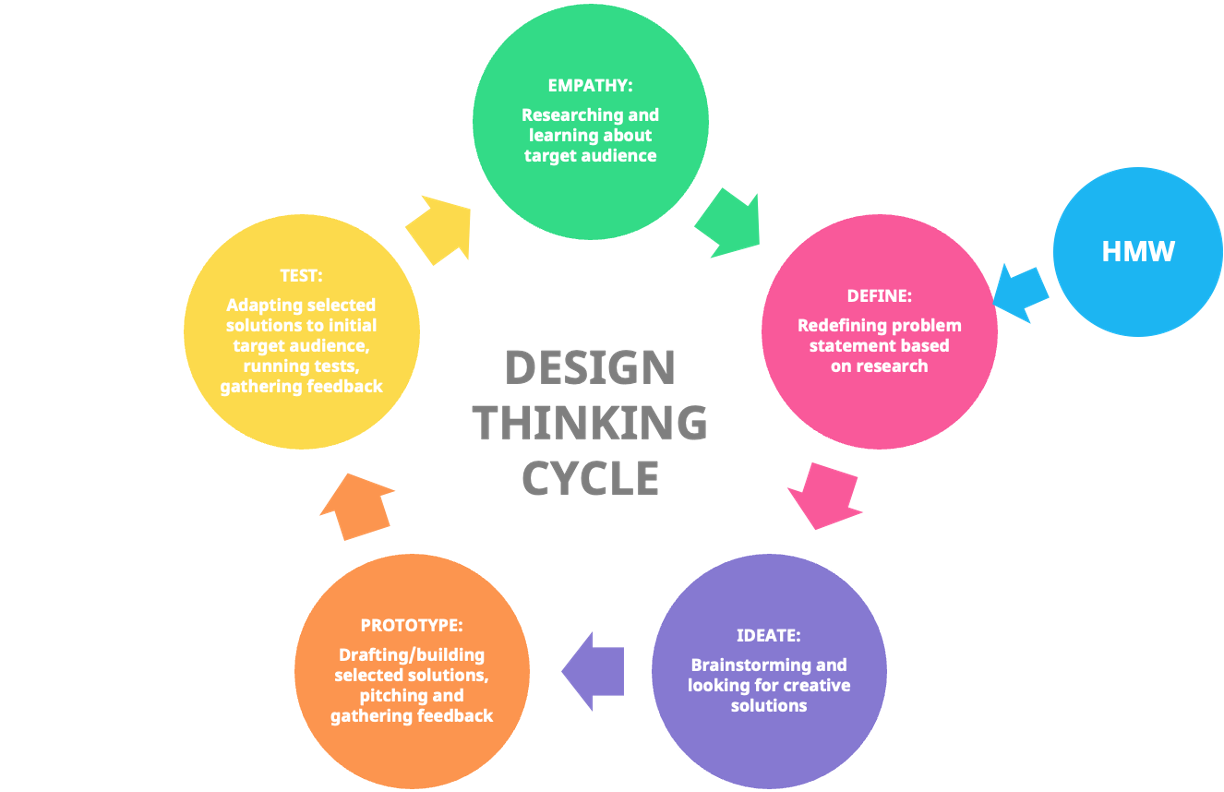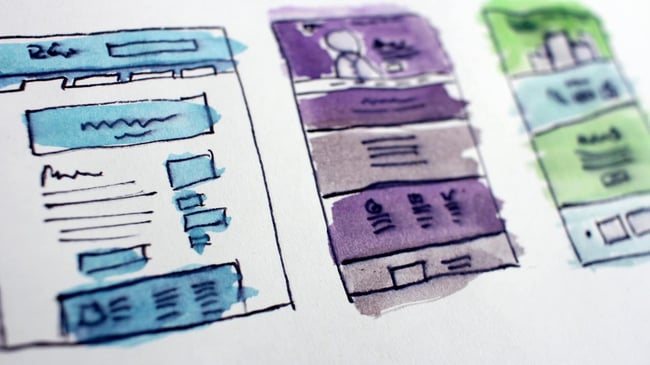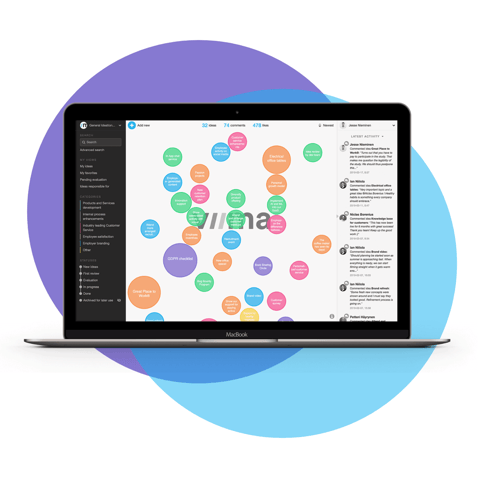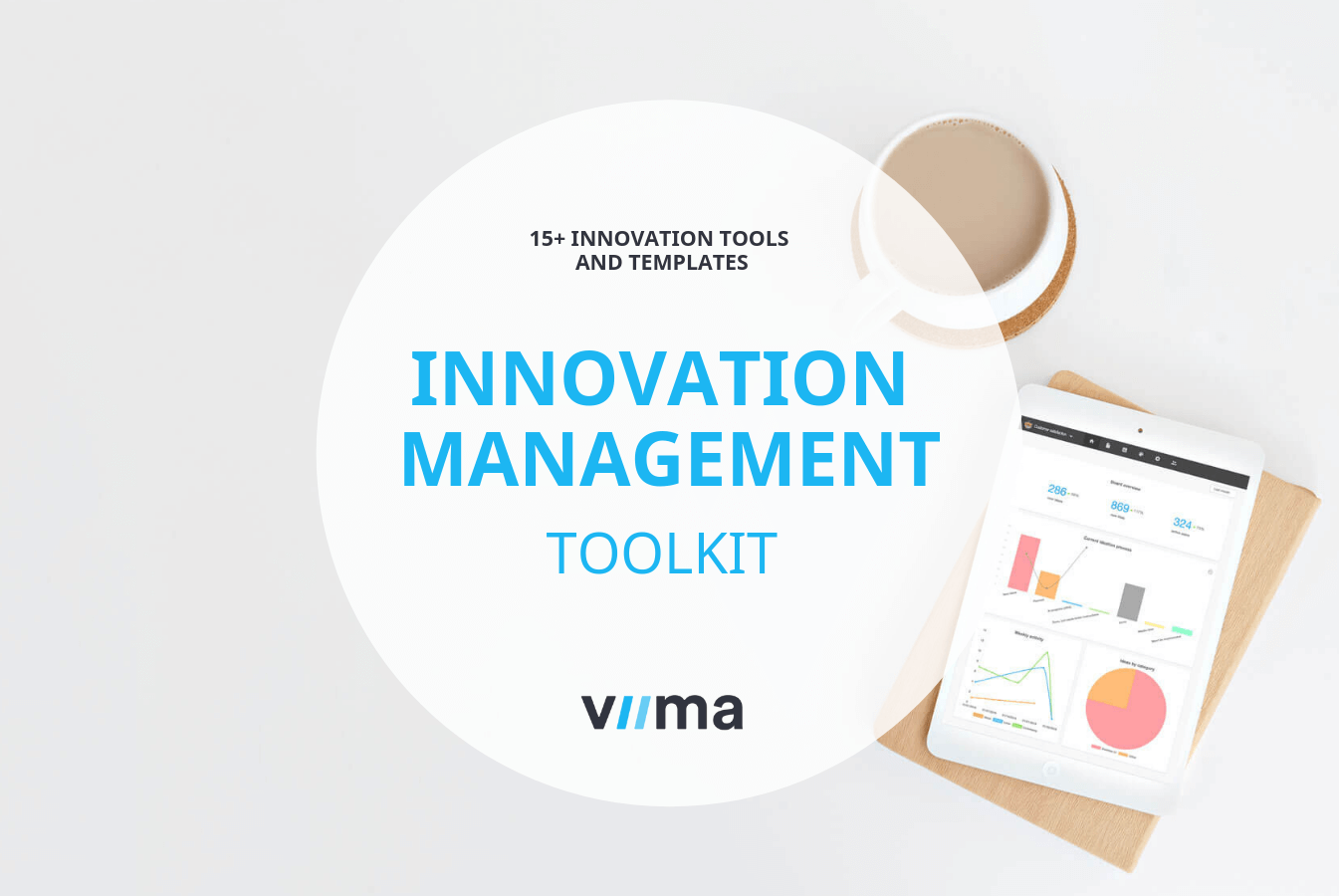How Might We Statements: Asking the Right Questions
Whenever I start a new project, I have my mind set immediately on the results, to the what I want to achieve. The beginning seems to be the hardest part for me. After discussing this with a few colleagues and friends, I realized that I am not the only one to dread the start.
Those first few steps we take before any bigger task are crucial: research equips us with the knowledge we will need later, setting clear goals paves the way to follow, and having a clear vision prevents wasting time. I guess exactly for this reason saying “the good start – half the battle” exists.
This desire to learn how to start, plan and kick off my projects led me to a discovery of a popular, cool technique called How Might We questions: simple magic behind the great design and even greater innovation. It might be just the trick for you too.
Table of contents

How Might We (HMW) questions is a technique for the problem definition phase of design thinking. It is a technique that allows you to sift through all the stubborn and rigid issues discovered during the research of the Empathy step and helps to define solvable problems.
First things first, let’s break down some of those big words.
Design Thinking
Essentially, design thinking is a people-centered, cyclical approach to innovative problem-solving. It consists of 5 distinct phases: empathy, define, ideate, prototype, and test. The latter two are somewhat self-explanatory – after all the brainstorming, you make a prototype of a product or a service and you test your heart away to make sure it either makes it or breaks it. And in the case of the latter – you repeat the whole cycle and start with empathy again.
Empathy is the very beginning of the design thinking process. Just as the words hint, at this step you try to understand your target audience (TA), their feelings, and needs. It allows you to understand to whom you are innovating and creating.
Only after you establish your TA you can really start defining your problem.
Define is the second step of the design thinking process. At this step you utilize all the research data, employ problem definition methods and get to the bottom of things – what is the problem you're trying to solve?
This is a crucial step for the remainder of the cycle. You will succeed with your design process not because you will just try to do something, to just solve a problem, but only if you will tackle the right kind of a problem.
Problem Definition
Problem definition is an important step for ideation and for the rest of the design thinking cycle. Without a well-structured and defined problem, it is nearly impossible to move to forward.
And here we meet the How Might We technique yet again. While there are different methods that might assist you with the problem definition stage (5 whys, problem framing, etc.), HMW is a creative, playful, and pretty simple way to approach any challenge.
It can unlock your team’s potential to find solutions to even the most technical, hands-on problems. And that can encompass absolutely anything and everything: cup design, an optimal shape of an ice-cream cone, website design, apps, flying cars… you get it – there are no limits to where you can use HMW.
And if you are struggling with your innovation or design processes, it might be the perfect time to approach it with more creative thinking.
After all, the bigger the challenge, the more creativity you will need.

Where it All Came From
The 70s – a decade of change, upheaval, and rock’n’roll. It was also a decade of innovation, with the invention of the floppy disk, the first ever email being sent out, microwaves becoming commercially available, and two-colored, striped soap hitting the market.
This innovative soap is where HMW’s story begins.
Irish Spring
In the 1970s, Colgate’s (known today as Colgate-Palmolive company) deodorizing, striped, green-colored soap Irish Spring became a commercial success, and it dominated the markets. With the promise of long-lasting freshness and a completely new design (striped soap was unheard of before), it became an attractive commodity. And competing companies were trying to come up with something, anything that would be able to compete with it.
One such company was Procter & Gamble (P&G). Eight long months of innovating and brainstorming led them nowhere, the company was simply unable to come up with a competitive, similar yet original product. So, they gave up trying to make something like Colgate and decided to try a completely different approach.
Enter Marino (Min) Basadur.
Researcher and consultant, Min Basadur joined P&G to help the team find a way to innovate and stay competitive.
He recognized a common hurdle that people faced in the organization – they did not know how to properly define the problem they were meant to solve. Without a clear problem, they were unable to set goals, and naturally, the innovation process was simply doomed from the start.
The question they were asking was how P&G can make a better green-stripe soap bar. This question led to multiple failed copycat soaps that never succeeded in the market. The sole focus of this question was direct competition to the soap, without stopping to wonder whether the market really needed the same exact soap.
After realizing this, they took a step back and decided to reframe the problem by focusing on what potential customers were really after. This people-centered approach drastically changed the company’s point of view and soon, they started asking a different question: how might we create a more refreshing soap of our own?
So, the HMW approach revolves around people. Customers, users, employees – any group of people for whom you are creating or improving a product should always be the focus of attention.
This focus on customers and the effort to create something that they would need instead of what the company wants to make helped P&G to create their own refreshing and striped soap bar Coast. It was never able to outperform Irish Spring, but nonetheless, it was a successful product.
And here we are – 50 years later, both design thinking and the How Might We approach have been successfully adapted by creative organizations like IDEO, Google, or Facebook to turn problems into excellent opportunities for innovation.
The Magic Behind H, M, and W
HMW is the beginning of the problem-solving process as it offers new angles, solution-based thinking per se, instead of solutions. It is, at the same time, an explanation of why – why should we do anything, why should we change, compete, innovate – and a call to solve the how. It sets the tone and builds the foundation for the ideation process.
How Might We questions can build the foundation for the ideation process
Declarative statements, such as “Our task is to create a better product” push people to narrow and imposing goals. What does better even mean? Everyone has a unique understanding of what better is, but if not aligned to certain goals, this better can hardly generate useful and feasible ideas. Instead, it pushes us to come up with solutions immediately: changing visuals, reducing the number of words, changing colors, and so on.
However, if we were to change that statement to a very simple “How Might We create a better product”, as imperfect as that question still is, it primes us to brainstorm about different ways said better might be reached and is likely to get people to ask what better actually means.
In short, it helps us not to assume that we have a solution from the start as it might limit our options, but rather question things and get to the root of the problem.
“As soon as you start using words like can and should, you’re implying judgment: Can we really do it? And should we? By substituting them with word might you’re able to defer judgment, which helps people to create options more freely, and opens up more possibilities”, Basadur explains in an HBR article.
The word might helps people create options more freely, and opens up more possibilities
This simple language trick also enables everyone, no matter the role, to contribute as the statement does not indicate a concrete angle and solution. Graphic designer, marketing specialist, coder – everyone can equally contribute various ideas to how the product or service could be made better.
The word might opens the way for a wide variety of ideas, both technical and creative, some that are practical, and others that are wilder but hold more potential.
How Might We technique relies on the play of words and the three simple, yet really powerful words that build a healthy question:
- How: is a beginning on the creative journey indicating that the team does not have the answer just yet. It is an open question that enables each member to consider different paths.
- Might: sheds judgment and obligation, indicating that the approach to finding a solution can be as wild as anyone can come up with. It enables creative thinking, open-mindedness, and a true form of brainstorming. It shows that logical and plausible solutions come later. Now – it’s all about creativity.
- We: is about teamwork. Only together a team can reach a common understanding of the question at hand and then work together to find a creative solution.

Challenges
How Might We questions is a valuable technique to determine what needs to be done to achieve business goals. Whether you are working on a new chair design, saving on electricity costs, or creating a new app – determining the core problem to be solved makes the next steps so much easier.
And while HMW approach to creative problem-solving sounds pretty straightforward, as mentioned before, just adding those three words is not enough to get a perfect question. It can still be done incorrectly.
The struggle here arises from a lack of exact measurements on how to judge HMW statements. How to really tell whether your question is just okay, or a real prize-winner? A How Might We question can be too broad or too narrow.
Not all is lost. Your success hugely depends on the challenge statement from which you will be deriving the HMWs.
The challenge statement is a simplified, clear, and actionable problem statement that acts as the base for all HMWs questions. It is the building block between what you have and what you want to create or improve for your target audience.
HMW Questions that Are too Broad
Asking a generic question might create too broad of a scope. Let’s say you are on a journey of revamping your website. Asking “how might we make our website better” is quite a good team exercise and might create a lot of new opportunities.
However, asking such a broad question does not tackle any specific problem and it does not set any direction. Better can mean different things to different people in the team, from high-resolution visuals, image loading speed, usage of white space, and copy… possibilities are endless, yet which direction to go?
HMW Questions that Are too Narrow
Narrow HMW questions do the exact opposite of what correct HMW should be doing: they get us hyper-focused on small things, limiting our vision and robbing us of an opportunity to find a creative, innovative solution.
An example of too narrow HMW could be “how might we make our webpage better by making visuals more entertaining?”. Perhaps changing images on the website would make visitors more interested, but that sounds like an open-and-shut case, immediately hinting at the solution – entertaining visuals.
.png?width=650&height=235&name=Too%20broad%20(2).png)
While broad HMWs don't give us any direction, narrow ones get us stuck on a quick fix, when the role of the HMW approach is to have multiple ideas thrown at one bigger problem.
So, how to avoid these issues, and how to ask the right questions?
How Might We Ask Better How Might We Questions
Like with most things in life, equipping oneself with knowledge is the key to success. The HMW approach is no exception. Before jumping straight into an HMW process, consider the following:
1. Target audience. People are at the core of design thinking and of How Might We approach. Know your customer (user). Here such tools as interviews, empathy mapping, journey mapping, customer persona, and Jobs to Be Done will be most useful. This step will help you identify your customer’s (user’s) needs and pain points. So, always keep in mind that the HMW technique is meant to help create the best version of your product or service, and here the best means created for the target user.
2. Point of View (POV) statement. Once you know your target audience, it is time to move to the Define step and start shedding some light on the challenges your audience faces and the needs that arise from them. POV is a method to reshape challenges into actionable steps. It is a combination of your target audience (or user), their needs, and insights (reasons behind their needs) uncovered during the research phase. Interaction Design Foundation offers the following simple yet brilliant formula for a POV statement:

Let’s look at this from our customer’s perspective.
Nihon L’Oréal had a communication challenge – they are operating in East Asia, a region where respect for experience and seniority are highly valued and are essential parts of the national culture. This in return made junior employees more apprehensive about coming forward with ideas. Before using Viima, their POV problem might have looked a little bit like this:
Nihon L’Oréal (user) needs to improve communication within the organization and create a safe space for junior employees to freely voice their ideas and concerns (need) because the company operates in a region where seniority is highly valued and younger colleagues do not speak up, which leads to lost ideas and opportunities (insight).
3. Frame the challenge. With insights into your target audience and their challenges at hand, it is time to narrow down the problem that your team will focus on. If we were to look at this step through the earlier example of a better webpage, the challenge or problem might be: poorly explained use of the platform we offer, hard-to-navigate website, difficulties to find the right information, complex and overwhelming copy. Really, anything that our (your) TA addressed as challenging is worth improving and looking at as a target for an HMW session.
These four steps will prepare you for the HMW session, act as a guiding light, and will assist you in asking the right questions, which are:
- Productive: generates several possible approaches or solutions.
- Accessible: people that aren’t experts in the area can offer a solution.
- Not too broad: offers some direction to start solving the problem.
- Not too narrow: does not limit ideas to a specific solution or approach.
- Attainable: hints at reachable goals and even possible successful outcomes.
- Outcome-oriented: helps explain what success would look like.
- People-centered: always consider the person to whom you are innovating.
It can take a hot minute and a lot of work just to understand what the right question to ask is, but once you do, that question can be an immensely powerful tool.
Running an HMW Process
Once you have done your research and crystallized your question, the hardest part is over. Still, the question is worthless without ideas, and a practical plan to answer that. Let’s next look at what else you need to do to reap tangible results.
First and foremost, you need people. HMW works best if it is done in a diverse group setting. Include team members from different departments. Chances are that your accountant will have a very different perspective on the creation of a new product than say a developer or marketing specialist. While all ideas are welcome, you naturally need input from specialists that understand the practicalities of what moving forward with any of the HMWs would take.
Normally, it takes two to ten and sometimes even more people to run a fruitful workshop, depending on the scale of the project and the size of the team. Also, it is important to have one to two (depending on the group size) facilitators to guide and run the workshop smoothly.
Running a Digital HMW Process
You can consider running a digital workshop. This type of workshop will help to include even those team members who work remotely. In addition, it creates an opportunity for asynchronous participation in an HMW process which is especially beneficial for people in large organizations, allowing them to contribute when it best fits their schedule.
Asynchronous tools like Viima also allow you to expand the audience from those 2-10 to even the whole organization, which can obviously lead to tons of novel and valuable ideas.
On top of that, idea management platforms can make facilitators’ jobs easier too: it gives an opportunity to create groups and topics before the workshop, and people can vote easily, and use hashtags and images to make their point clearer.
Not to mention reduced physical and time waste, and how easy it is to follow up on each HMW submission.

No matter if you will decide to go with the old-school post-its method to run an HMW workshop or a digital idea challenge process, there are several steps to consider.
Before the Process
First, explain what HMWs are, and why you are using them, and be prepared to provide examples of suitable questions to be asked. Examples will help people to stay on track and to avoid too broad or too narrow questions.
So, introduce the research results of your target audience, and the person behind the challenge you are facing. Who are they, what do they like, and what do they need?
If we were to go back to an earlier example of a better webpage, we should first determine who is our ideal customer on the website and then we can start considering the improvements to be made.
It means that HMW helps you to make decisions with customers in mind, improving customer retention and satisfaction.
In addition, determine and present all the metrics that will be used after the whole process to evaluate the ideas.
Starting the Process
Introduce the results of your research, your target audience, and problems, and your desired goals. Start by rephrasing them as questions by adding “How might we” at the beginning and “so that” at the end.

During the Process
A good method to unlock even more questions and to use all of your research is to question each HMW question by asking What is stopping us to...?
For example, if you are trying to solve the issue of hard-to-find information on your website and someone comes up with HMW improve the FAQ page on your website? You can ask – What is stopping us from improving the FAQ page? If the answer is something like lack of information, you can then ask HMW to get employees to share and document more of the information they possess? And so on.
End of/After the HMW Process
As much fun as it is to brainstorm ideas and let your mind wander, this part of the process is where the magic actually happens. The sole purpose of the HMW session is to set the right goals and direction for your design and innovation processes.
So, don’t waste this opportunity to go through all the submissions, discuss them with people present, and ask them to vote on the most feasible, financially beneficial, easiest to implement, most rewarding, or in any other way most suitable, ideas.
Select and prioritize a handful of HMWs your team will work on (two to five) as this will help them focus, and set a timeline for implementation, but don’t throw the remaining suggestions away.
Creative ideas do not have a date of expiration and you never know when something might become just the right solution for your future problems.
Turning those ideas into innovation can be challenging, but we have you covered – check out this in-depth guide on how to create your own roadmap for converting more ideas into reality, or try some of our toolkits to take those ideas to the next level!
Conclusion
The How Might We technique is a creative, and interactive method of a problem definition step in the design thinking process. And it makes it so much more fun to kick off any of the projects that you've been dreading to even starting.
It does take some time to master, yet once you reach that point, the brilliant simplicity of just the right HMW question can leave you with a solvable problem and a great base for the ideation step. After all, a problem is just another reason to innovate.
To help you get started with the HMW technique, or if you simply need a helping hand, we created this guide with templates and actionable tips which you can download for free here.


.png?width=50&height=50&name=Untitled%20design%20(1).png)




